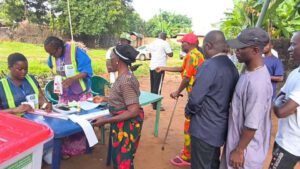In a major step toward boosting Nigeria’s electricity generation and promoting renewable energy adoption, the Federal Government has unveiled plans to construct modular solar power plants with a combined capacity of 1,900 megawatts across the 19 northern states, 9am News Reports.
The announcement was made by the Minister of Power, Adebayo Adelabu, during the sixth edition of the 2025 Ministerial Press Briefing in Abuja. According to him, each solar station will generate 100MW, enabling states to become more energy self-reliant and less dependent on the national grid.
FG Targets 8,000MW Before 2027
Adelabu also set an ambitious target: to raise electricity generation and distribution to 8,000MW by the end of President Bola Ahmed Tinubu’s first term in 2027. This builds on current improvements, with power generation already increasing from 4,100MW in 2023 to over 5,800MW in 2025.
“With abundant sunshine across Nigeria, especially in the north, nothing stops us from achieving utility-scale solar generation,” Adelabu said.
The minister revealed that Sun Africa Energy and Skipper Electric are partnering with the government to achieve this target. While Sun Africa is bringing in 1,000MW of solar energy to feed directly into the national grid, Skipper Electric will spearhead the development of modular solar plants across the northern states.
Regional Power Challenges Prompt Urgency
The plan follows a surge in vandalism and theft of transmission infrastructure in the north. In October 2024, destruction of key lines such as the 330kV Shiroro-Kaduna power line led to a month-long blackout affecting 17 of the 19 northern states.
Affected states include Kaduna, Kano, Katsina, Bauchi, Gombe, Borno, Yobe, Taraba, Benue, Niger, Kwara, Nasarawa, Plateau, Sokoto, Zamfara, Jigawa, and Kogi.
These incidents prompted governors in the region to demand energy diversification, emphasizing solar power as a viable alternative.
To support the new solar installations, the government is also working to expand and modernize the national grid, which now has a capacity of 8.7GW, thanks to efforts by the Transmission Company of Nigeria (TCN) and the FGN Power Company.
Recent achievements include the commissioning of 61 new transformers in 2024 and an additional nine transformers in early 2025. The grid, which previously collapsed under 5,000MW, now supports up to 5,800MW without failure.
“In just over a year, we’ve added 1,700MW. If past governments had added just 1,000MW per year since 1999, we’d be at 30,000MW today,” Adelabu noted.
The government is banking on private sector investments to build new transmission lines, substations, and transformers, as public funds are limited.
Adelabu highlighted that about 150 million Nigerians now have access to electricity, leaving 80 million without stable power. He emphasized the need to focus not just on access, but on stability and affordability.
A key innovation on the horizon is the regionalisation of the national grid, which includes the development of eastern and western supergrid systems. These will ensure that faults in one part of the country do not affect others a vital improvement for national energy stability.
With plans for 1,900MW modular solar power stations and a bold 8,000MW national target, the Federal Government’s energy roadmap shows real intent. If executed effectively, it could dramatically transform the power sector, especially for the long-neglected northern states.
Stay tuned to 9am News Nigeria for more Breaking News, Business News, Sports updates And Entertainment Gists.
















